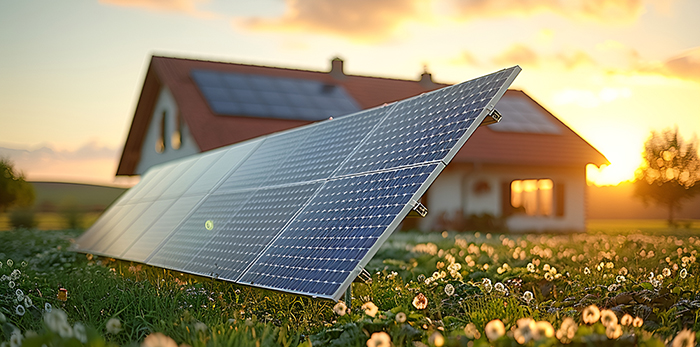Solar cells are non-mechanical devices that use semiconductors to directly convert sunlight into electricity through the photovoltaic effect. Intuitively, people might think that solar cells thrive under intense sunlight, but is that really the case?
Humanity has long utilized solar energy, with three main ways to convert it: photovoltaic conversion, photothermal conversion, and photochemical conversion. Photovoltaic (PV) power generation, which converts sunlight into electricity, is one of the most efficient uses of solar energy.
The photovoltaic effect was first observed in 1839 by French scientist Edmond Becquerel, and it refers to the generation of an electric potential when light hits a semiconductor. Later, Einstein explained this effect using the quantum theory of light, which won him the 1921 Nobel Prize in Physics.
Unlike the photoelectric effect, which occurs when light strikes a single conductor, the photovoltaic effect happens at the boundary between two semiconductor plates. When connected by a wire, this boundary creates an electric field, allowing current to flow.
So, how do solar cells turn sunlight into electricity? Sunlight is a broad spectrum of electromagnetic radiation. When it strikes a solar cell, the radiation can be reflected, absorbed, or passed through. Only absorbed radiation is converted into electrical energy.
For silicon-based semiconductors, an energy of 1.11 electron volts (eV) is needed to knock an electron loose from its atom. Only photons with energy greater than this threshold can generate electricity. However, excess energy from higher-energy photons is lost as heat, contributing to the heating of the solar panel, which can raise its temperature above the ambient air.
Contrary to popular belief, silicon-based solar cells actually prefer cooler environments, even though they still need sunlight. As temperatures rise, solar panels produce less energy, despite receiving the same amount of sunlight.
High temperatures mainly reduce the open-circuit voltage (the voltage when no current is flowing), although the short-circuit current (the current when the cell is short-circuited) remains relatively stable. This means higher temperatures lead to lower efficiency and reduced output power.
Solar cells are typically tested at a standard temperature of 25°C (77°F). When the panel's temperature reaches 60°C (140°F) or higher, its power output drops significantly. For every degree increase in temperature, the short-circuit current increases by only 0.04%, while the open-circuit voltage decreases by 0.4%.
Even though efficiency drops in the summer, the abundance of sunlight during this season still results in higher overall energy production compared to other seasons.

How to Cool Down Solar Panels
Like other electronic devices, solar panels perform better in cooler temperatures. Since they rely on sunlight rather than heat for power, they function best in bright yet cool conditions.
To cool down solar panels during the summer, should we put up a shade? Of course not! Blocking sunlight would negate the purpose of a solar panel. What about applying sunscreen? No, applying physical barriers would reduce light absorption, and chemical methods would not help lower the temperature.
For rooftop solar panels, natural ventilation is an effective and economical way to cool them. Installing the panels with a gap between them and the roof allows air to circulate and cool the panels. However, it's important to keep leaves and debris out of the gap to maintain airflow and prevent overheating.
Researchers have also studied various cooling methods to improve solar panel efficiency. In addition to natural ventilation, forced air cooling and photovoltaic-thermal cooling (PVT) have been explored, offering valuable insights into lowering panel temperatures and boosting energy output.
As solar cells, the emissaries of clean energy, continue to integrate into our lives, they bring with them a fresh wave of low-carbon, environmentally friendly solutions.







